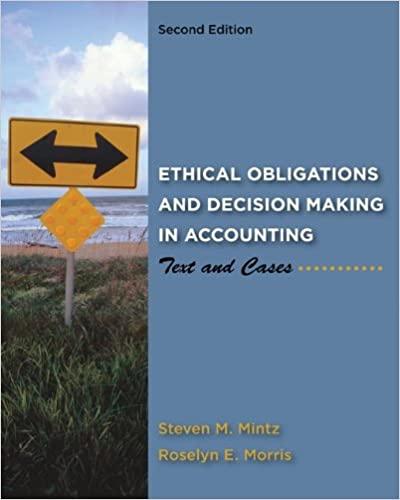Question
Hurricane Inc. purchased a portfolio of available-for-sale securities in Year 1, its first year of operations. The cost and fair value of this portfolio on
Hurricane Inc. purchased a portfolio of available-for-sale securities in Year 1, its first year of operations. The cost and fair value of this portfolio on December 31, Year 1, was as follows:
| 1 | Name | Number of Shares | Total Cost | Total Fair Value |
| 2 | Tornado Inc. | 830.00 | $14,442.00 | $16,766.00 |
| 3 | Tsunami Corp. | 1,300.00 | 31,460.00 | 36,790.00 |
| 4 | Typhoon Corp. | 2,160.00 | 44,496.00 | 43,200.00 |
| 5 | Total |
| $90,398.00 | $96,756.00 |
On June 12, Year 2, Hurricane purchased 1,440 shares of Rogue Wave Inc. at $48 per share plus a $130 brokerage commission.
Required:
| A. | Provide the journal entries to record the following (refer to the Chart of Accounts for exact wording of account titles):
| ||||
| B. | How are unrealized gains and losses treated differently for available-for-sale securities than for trading securities? |
| CHART OF ACCOUNTS | |||||||||||||||||||||||||||||||||||||||||||||||||||||||||||||||||||||||||||||||||||||||||||||||||||||||||||||||||||||||||||||||||||
| Hurricane Inc. | |||||||||||||||||||||||||||||||||||||||||||||||||||||||||||||||||||||||||||||||||||||||||||||||||||||||||||||||||||||||||||||||||||
| General Ledger | |||||||||||||||||||||||||||||||||||||||||||||||||||||||||||||||||||||||||||||||||||||||||||||||||||||||||||||||||||||||||||||||||||
|
| ||||||||||||||||||||||||||||||||||||||||||||||||||||||||||||||||||||||||||||||||||||||||||||||||||||||||||||||||||||||||||||||||||

B. How are unrealized gains and losses treated differently for available-for-sale securities than for trading securities?
Unrealized gains and losses for available-for-sale securities are accumulated over time and reported as a credit (positive) or debit (negative) balance in the section. As a result, the changes in fair value on the income statement, as is the case with trading securities. Bypassing the income statement is on the grounds that available-for-sale securities will be held for a time than trading securities; thus, fluctuations in market prices have to cancel out over time.

Instructions Chart of Accounts Journal PAGE IV JOURNAL ACCOUNTING EQUATION DATE DESCRIPTION POST. REF. DEBIT CREDIT ASSETS LIABILITIES EQUITY 1 2 A2. Provide the journal entry to record the June 12, Year 2, purchase of Rogue Wave Inc. stock. Refer to the Chart of Accounts for exact wording of account titles. PAGE 10 JOURNAL ACCOUNTING EQUATION DATE DESCRIPTION POST. REF. DEBIT CREDIT ASSETS LIABILITIES EQUITY 1 2 Next All work saved. Email Instructor Submit Test for Grading 20:26 Total $90,398.00 $96,756.00 Final Question B. How are unrealized gains and losses treated differently for available-for-sale securities than for trading securities? Unrealized gains and losses for available-for-sale securities are accumulated over time and reported as a credit (positive) or debit (negative) balance in the Stockholders' Equity section. As a result, the changes in fair value are not reflected on the income statement, as is the case with trading securities. Bypassing the income statement is not supported on the grounds that available-for-sale securities will be held for a longer time than trading securities; thus, fluctuations in market prices have a greater opportunity to "cancel out" over time. Next
Step by Step Solution
There are 3 Steps involved in it
Step: 1

Get Instant Access to Expert-Tailored Solutions
See step-by-step solutions with expert insights and AI powered tools for academic success
Step: 2

Step: 3

Ace Your Homework with AI
Get the answers you need in no time with our AI-driven, step-by-step assistance
Get Started


